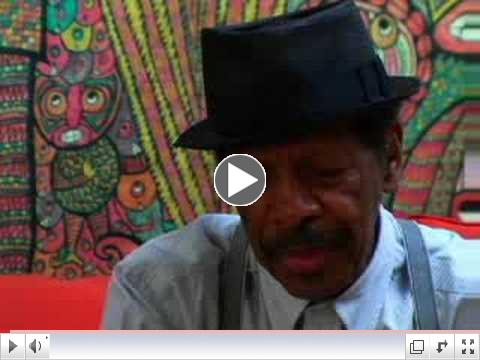 | | The Gift of Jazz: Interview with Ornette Coleman |
|

NEW CCDS Pamphlet
on Climate Change.
|
Blog of the Week...

|

New CCDS Book Reporting on Vietnam
|
|
Radical Jesus:
A Graphic History of Faith 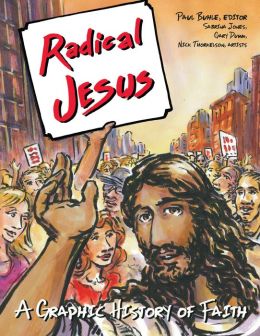 By Paul BuhleHerald Press By Paul BuhleHerald Press
|

Want to Know what CCDS has
been doing...Check it Out!
|
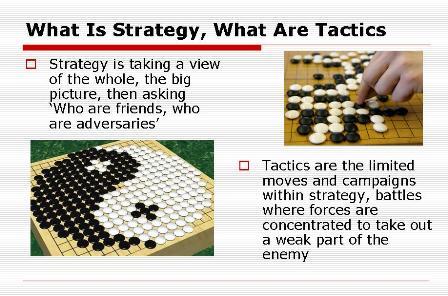 Keep On Keepin' On Keep On Keepin' OnHating the 'Middle Class,' Why Socialists Run in Elections, Strategy and Tactics Slide Slow, Class and Privilege, the Green New Deal ...and other Short Posts on Tumblr by Carl Davidson
|

Edited by Carl Davidson Revolutionary Youth and the New Working Class: The Praxis Papers, the Port Authority Statement, the RYM Documents and other Lost Writings of SDS Changemaker, 273pp, $22.50
For the full contents, click the link and view 'Preview' under the cover graphic.
|
 The new annual edition of our journal of discussion and analysis is now out. More than 170 pages, it includes 14 articles on strategy austerity, organizing, and the right. Cost is $10 plus shipping. Or get one by becoming a sustainer. Click the title to buy it directly. The new annual edition of our journal of discussion and analysis is now out. More than 170 pages, it includes 14 articles on strategy austerity, organizing, and the right. Cost is $10 plus shipping. Or get one by becoming a sustainer. Click the title to buy it directly.
|
|
By Randy Shannon, CCDS

"Everyone has the right to work, to free of employment, to just and favorable conditions of work and to protection against unemployment."
- United Nations Universal Declaration of Human Rights, December 10, 1948
I. Introduction
The "Great Recession" that began in 2007 has caused the greatest percent of job losses since the Great Depression of 1929. This crisis is the end of an era of unrestrained 'neo-liberal' capitalism that became public policy during the Reagan administration. The crisis marks a new level of instability with the growth of a global financial elite that targeted US workers and our trade unions after World War II.
|
|
Order Our
Full Employment Booklets
 |
...In a new and updated 2nd Edition
Capitalism may well collapse under its own excesses, but what would one propose to replace it? Margaret Thatcher's mantra was TINA...There Is No Alternative. David Schweickart's vision of "Economic Democracy" proposes a serious alternative. Even more fundamentally, it opens the door to thinking about alternatives. His may or may not turn out to be the definitive "successor system," but he is a leader in breaking out of the box. |
 by Paul KrehbielAutumn Leaf Press, $25.64
by Paul KrehbielAutumn Leaf Press, $25.64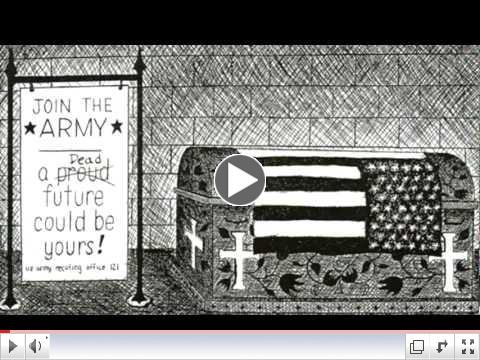 | | Shades of Justice Video: Bringing Down a President, Ending a War |
|
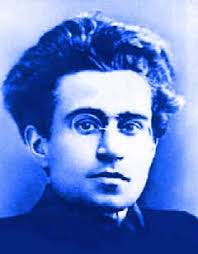 By Giuseppe Fiori
Verso, 30 pages
|

Essays on Mondragon, Marx, Gramsci
and the Green and Solidarity Economies |
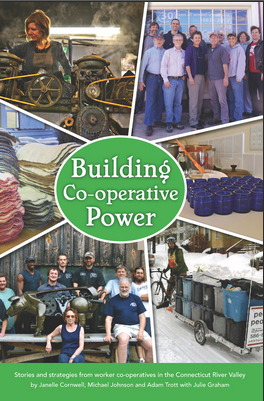
The Story of Workers Coops
in the Connecticut River
Valley Today.
Coauthors: Janelle Cornwell
(Worcester State University),
Michael Johnson (Grassroots
Economic Organizing Newsletter)
and Adam Trott (Valley Alliance
of Worker Co-operatives and
Collective Copies)
|
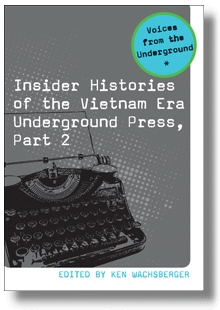
- Foreword by Susan Brownmiller
- Preface by Ken Wachsberger
$37.50 + $6 shipping
|
|
Discussion Documents for a Militant Movement
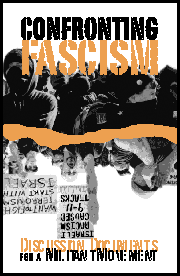
By Don Hamerquist
|
|
|
|
An Invitation to CCDSers and Friends...
 Massive Climate Massive Climate
Actions Still
Making Waves
We're the Committees of Correspondence for Democracy and Socialism...Do you have friends who should see this? Pass it on...Do you have a blog of your own? Others you love to read every day? Well, this is a place where you can share access to them with the rest of your comrades. Just pick your greatest hits for the week and send them to us at carld717@gmail.com! Most of all, it's urgent that you support low-wage workers, oppose militarized police, the war on Gaza, defend voter rights, plan for 2014 races now, oppose austerity, support the 'Moral Mondays' in North Carolina, the fight for the Green New Deal, a just immigration policy and the Congressional Progressive Caucus' 'Back to Work Budget'! We're doing more than ever, and have big plans. So pay your dues, make a donation and become a sustainer. Do it Now! Check the link at the bottom... |
Labor Played Big Part in Massive Climate March

By Blake Deppe
People's World
Sept. 25 2014 - NEW YORK - In the midst of the 400,000 who participated in the Sept. 21 People's Climate March here, there were many trade unionists. Six national unions, numerous state labor federations and central labor councils, plus as many as 50 local unions took part in the largest climate march in history.
The union workers, alongside many thousands of others, filled the streets of Manhattan's East Side for much of the day, demanding that U.S. and world leaders act to divest from fossil fuels and combat climate change. They did so a day ahead of the UN Climate Summit, which is being attended by 120 world leaders including President Obama.
In the city itself, the American Federation of State, County, and Municipal Employees played a major role in organizing marchers, amongst whom were community coalitions, women's groups, and a host of progressive organizations. Unions worked with these groups and many other allies, coming together to demand international action to curb the factors that cause global warming, including carbon and methane emissions. In particular, a major focus for unions was environmental justice. They pointed to the fact that workers, those in poverty, and minorities are often the victims of pollution and toxic waste. Even when it comes to national disasters caused by climate change, they added, it is most often working people who suffer the most.
"I think this climate march is awesome," said Audra Makuch, executive assistant to the regional director of the New York area United Food and Commercial Workers. "There's so many people; a super diverse crowd. Labor has a strong presence here, and there's a good reason for that. A lot of union members worked super hard to turn out for this event. The UFCW is here, and the SEIU. And National Nurses United brought buses of workers down. Any of them will tell you, climate change is a working person's issue. The working class bears the brunt of problems resulting from it. So this is really important for any worker."
Among labor's other participants in the march were the Amalgamated Transit Union; Communications Workers; the Office and Professional Employees; the Retail, Wholesale, and Department Store Workers; the National Education Association; the Service Employees, and the NNU. Also active in the march were members of the Canadian Labor Congress and UNI, an international federation that includes U.S. unions.
Other union backers included locals and state councils of SEIU and the American Federation of Teachers; UFCW; the National Writers Union; UAW; Teamsters Joint Council 16 and Locals 805 and 814; a heat and frost insulators' local; a large New York City Transport Workers local; IBEW Local 3 from Queens; the Blue-Green Alliance; the National Domestic Workers Alliance; and the Labor Council for Latin American Advancement (LCLAA - the AFL-CIO constituency group for Hispanic workers).
Union marchers also showed disdain for corporations whose frequent policies of inaction and denial on climate matters often result in dangerous pollution....(Click title for more)
|
|

By Jeff Goodell
Rolling Stone
Sept 15, 2014 - As the sun rises in mid-July over Andrews Air Force Base near Washington, D.C., Secretary of State John Kerry climbs quickly - he's positively bouncing - up the carpeted stairs of his blue-and-white government issue 757.
Kerry is heading to Beijing to talk with Chinese leaders about, among other things, one of President Obama's top priorities in the waning days of his second term: the urgent need to reduce carbon pollution and limit the damage from climate change. But the rest of the world isn't cutting Kerry any slack right now - there's trouble with the elections in Afghanistan, rising conflict in the Middle East and upcoming negotiations with Iran on nuclear weapons.
As he ducks into the plane, Kerry is already talking intensely on his cellphone, deeply wired into the global chaos. An aide shoulders his bags as well as a large black case that contains his acoustic guitar, which he takes with him everywhere and often plays late at night when he's alone in his hotel room.
For nearly a decade, the U.S. and China, the two most powerful nations on the planet, have met every year to talk about how to run the world together. When the talks began in 2006, they focused on issues like currency-exchange rates, trade barriers and China's never-ending disputes with Taiwan. In 2009, shortly after Obama's inauguration, the U.S. pushed to add climate change to the mix, hoping that a better understanding between the U.S. and China would lead to a better deal at the Copenhagen climate summit that year. (It didn't help - mistrust between the countries was a large part of the reason why the talks imploded.)
This year's U.S. delegation includes many of the administration's most influential climate hawks - Energy Secretary Ernest Moniz, top climate negotiator Todd Stern and John Podesta, counselor to Obama, who has become the administration's de facto point man for climate policy. This is the diplomatic equivalent of a full-court press. In the past couple of years, Obama has made some important moves, including investing billions in clean energy, jacking up vehicle-efficiency standards and proposing rules to limit pollution from U.S. coal plants. But climate change is a global issue. Unless the West can persuade other countries to take climate action seriously, nothing any single nation does is going to matter much when it comes to solving the problem.
Except, that is, for China. The blunt truth is that what China decides to do in the next decade will likely determine whether or not mankind can halt - or at least ameliorate - global warming. The view among a number of prominent climate scientists is that if China's emissions peak around 2025, we may - just barely - have a shot at stabilizing the climate before all hell breaks loose. But the Chinese have resisted international pressure to curb their emissions. For years, they have used the argument that they are poor, the West is rich, and that the high levels of carbon in the atmosphere were caused by America's and Europe's 200-year-long fossilfuel binge. Climate change is your problem, they argued - you deal with it. But that logic doesn't hold anymore. China is set to become the largest economy in the world this year, and in 2006, it passed the U.S. as the planet's largest carbon polluter. China now dumps 10 billion tons of CO2 into the atmosphere every year. That number is expected to grow to 15 billion tons by 2030, dwarfing the pollution of the rest of the world. If that happens, then the chances that the world will cut carbon pollution quickly enough to avert dangerous climate change is, according to Kevin Anderson, deputy director of the Tyndall Centre for Climate Change Research in the U.K., "virtually zero."
John Kerry knows this. He also knows that when the nations of the world gather in Paris next December to try to hammer out a global climate agreement, it may be the last best chance to address this problem before the Years of Living Dangerously begin. Like other climate negotiations held under the banner of the United Nations Framework Convention on Climate Change, the Paris meeting is likely to be warped by 25-year-old grudges and a profound sense of distrust. "But right now, Paris is the only game we have," one member of the State Department's climate team told me. "If it fails, there is no Plan B."
In Beijing, one of Kerry's goals will be to find out all he can about China's strategy for Paris - what kind of commitment the Chinese might make, how sincere they are, what tactics they will use. But for Kerry, this is anything but a straightforward conversation, because it's twisted up in the shadow play of U.S.-China relations, which are marked by suspicion, paranoia and saber rattling on both sides as the U.S. adjusts to China's rising power in the world. "What we are living through now is the end of 500 years of Western predominance," historian Niall Ferguson has written. The issue is not whether China will challenge America's dominance, but when and how. ...(Click title for more)
|

By Jesse Paul
Denver Post via Portside
Sept 24, 2014 - In the largest protest this week, several hundred Jefferson County students left classes Wednesday morning in protest of school board decisions and proposed changes to history curriculum.
At least 700 students were at the intersection of Ken Caryl Avenue and Chatfield Boulevard by mid-morning. Most of the students were from Chatfield and Dakota Ridge high schools.
Some of the students waved American flags and held signs that said, "Don't make history a mystery," which has become a slogan of this week's walk-outs.
"Education without limitation!" students chanted.
Several Jefferson County sheriff's deputies were at the scene, along with school administration members. Several cars drove past with kids waving signs.
About two hours after the protest began, a student leader urged his classmates to return to school.
"Let's show them we respect out education!" the leader said over a bullhorn. Most of the students walked away from the protest by about 10:15 a.m.
"It was kind of just spur of the moment," said organizing student Ashlyn Maher, a Chatfield senior who helped create the Facebook page for the protest.
"I heard one teacher was so moved by people leaving that she started to cry," Maher said.
Jordan Gleason attends Columbine High School but she came anyway to support the cause.
"We've really got to fight for what we believe in," Gleason said, adding that she didn't show up for class Wednesday.
"I'm not going to lie, there are kids here (just skipping class)," said student organizer Scott Romano, a Chatfield junior. "But the majority of us are out here for the right reasons."
Tuesday's student walkouts [1] happened at Arvada West, Pomona, Ralston Valley, Wheat Ridge and Golden high schools and included hundreds of students bearing signs who flooded the intersections of major thoroughfares.
More than 100 Evergreen High School students walked out [2] of classes Monday morning to protest outside of the county's school administration building in Golden where they met with the district superintendent.
Students said they organized the protests on Facebook.
"I respect the right of our students to express their opinions in a peaceful manner," Jeffco superintendent Dan McMinimee said in a statement Tuesday. "I do, however, prefer that our students stay in class."
A student and parent from Bear Creek High School also called The Denver Post to announce they would also be protesting Wednesday morning. ...(Click title for more)
|

Voters are unhappy with the mayor - but his fundraising prowess is a big deterrent for would-be challengers
By Mark Guarino
Al-Jajeera
Sept 29, 2014 -CHICAGO - Rahm Emanuel has everything a winning mayoral candidate would seem to need: name recognition, a campaign war chest nearing $10 million and famous friends in Hollywood and the White House who are more than willing to slide into town at a moment's notice.
Yet polling has consistently shown that the former Obama administration chief of staff has one significant deficit in his campaign for re-election next February: The majority of voters in his city do not like him.
Over the last 12 months, Emanuel's approval ratings have been on a downward spiral. A Chicago Tribune poll released in August, for example, shows that 35 percent of likely voters approve of the job he has been doing, down from 50 percent about a year ago. The results are similar regardless of voters' race, income, age or gender. A Chicago Sun-Times poll from May shows similar dissatisfaction: Only 18 percent of those surveyed said Emanuel was doing a better job than previous mayor Richard M. Daley.
The polling results reflect a growing tension over leadership in Chicago. To many, Emanuel represents a problem. In 2012, the first full year of his term, the city's homicide count surpassed 500. And, many say, his decision to shut nearly 50 public schools - the largest mass school closing in U.S. history - and to strike development deals downtown instead of in lower-income neighborhoods has deepened the city's economic divide.
Critics say Emanuel, who once earned more than $18 million over a two-year period as a Wall Street investment banker, professes concern for struggling households, but has done little on their behalf. They say his many unpopular measures - a rollout of traffic cameras, privatizing public transit and expanding charter schools amid mass teacher and custodian layoffs - contradict the mayor's narrative that he is fighting for all of Chicago.
"The Emanuel tenure has been a huge wake-up call for a lot of people," says Tim Meegan, a high school social-studies teacher who is running for city-council alderman in the city's 33rd Ward, an ethnically diverse area on the city's northwest side. "He's not a working-class guy from the streets of Chicago, and he's refused to compromise except to the 1 percent. He's so insulated that he doesn't really understand the city he has been charged with governing."
At the moment, if Rahm ran today, Rahm would win despite what the polls show.
Emanuel has publicly brushed off the polls, saying they are likely tied to the sagging economy and that voters are feeling squeezed by shrinking opportunities in the job market. His campaign spokesperson Steve Mayberry wrote in an email that the mayor has created 26,000 new jobs and is fighting to raise the minimum wage.
"There's a lot more work to do - especially in the neighborhoods suffering most from joblessness and violence," he wrote. "But by making the tough decisions that were avoided for too long, Mayor Emanuel is providing the strong leadership to make Chicago work for everyone."
And, despite the polls, Emanuel remains, so far, in a comfortable position. He is not yet feeling the heat from any high-profile challenger who will outspend him. Despite Chicago's gaping budget holes, the most underfunded pension system in the U.S. and lagging unemployment - issues a GOP candidate in another city might pounce on - the Republican party here is virtually nonexistent. That means any opposition must originate from Emanuel's own party. But in a patronage town where loyalties are tribal, that can be risky.
And Emanuel, who established his political career as a prodigious fundraiser, is trying to ensure that critics from within his own party are dissuaded from even thinking of entering the race. Chicago Forward, a super-PAC representing Emanuel backers, has already raised more than $1 million to advocate for the mayor's policies. Emanuel also persuaded a group of loyal alderman to form their own organization to advocate for his policies.
The divide-and-conquer approach has so far paid off: Cook County Board President Toni Preckwinkle, enormously popular in Chicago and a clear winner over Emanuel in the polls, announced this summer that she would not run. Her decision came two months after the Tribune revealed that an Emanuel spokesperson was trying to pitch negative stories about her to reporters.
"You can't beat somebody with nobody and they have to have name recognition and they have to raise resources. At the moment, if Rahm ran today, Rahm would win despite what the polls show," says Dick Simpson, a political scientist at the University of Illinois at Chicago.
Time and time again, he's not listened to Chicagoans and what they want.
Yet polling shows that, despite his efforts to mute the opposition from within his own party, Emanuel may still be vulnerable to Democrats who are voicing populist outrage over his alleged scandals and missteps. Chicago Alderman Bob Fioretti, one of the few dissenting voices in the city council, has announced his candidacy; Chicago Teachers Union President Karen Lewis, who became the public face of the outcry over the school closings, is also expected to run.
Simpson says Emanuel is not invincible in the coming election and that the escalating nickel and diming from his office have gouged people at a time when they are hurting most. They see the mayor's pet projects - a giveaway of premium parkland to filmmaker George Lucas to house a personal art collection and the use of public tax money to build a South Loop basketball stadium for DePaul University - as producing little to no impact beyond the downtown area.
Take the red-light cameras. Emanuel insisted they were intended for public safety. But according to a 10-month Tribune investigation, it appeared the cameras were rigged to issue thousands of unjustified $100 tickets, confirming public suspicions that their primary purpose was to generate income. A separate investigation showed that Redflex Traffic Systems, a city contractor, was involved in a $2 million bribery scheme to win the contract. Two company officials, plus a city official, received federal indictments in August; they say they are not guilty.
The scandal underscores the perception that Emanuel is out of touch. It didn't help when, in the spring, media reports showed that he had regularly blown through speeding cameras, racking up 20 citations for various violations since 2012, but had them dismissed.
These misfires have galvanized the opposition and played directly into the "two Chicagos" narrative it embraces. Fioretti, a Chicago native and Democrat who recently declared his candidacy, says he will audit the city's books and issue a moratorium on charter schools.
Michael Kolenc, Fioretti's senior campaign strategist, says that Emanuel is not vulnerable on a single issue, but many. "Time and time again, he's not listened to Chicagoans and what they want. Instead, he's gone off on his own. So the streets are less safe, our schools need to be stronger, and we need to bring economic development to all parts of the city, not just one," he says.
Mayberry, Emanuel's spokesperson, blasts Fioretti for "a notorious history of pandering and inconsistency on some of the city's most pressing issues" and says his "lack of political backbone has been on display since the day he assumed office."
Emanuel's most formidable opponent may be Lewis, who became a vocal critic of the mayor following a teachers' strike early in his first term. Lewis is currently gathering petitions to get her name on the ballot. The Tribune poll shows her beating Emanuel in a head-to-head challenge 43-39 percent. A Chicago Sun-Times poll shows her beating Emanuel 45-36 percent.
If either Fioretti or Lewis wins, they will inherit a rapidly worsening pension crisis that predates Emanuel. ...(Click title for more)
|
More Conflict: Who Pays the Pro-War Pundits?
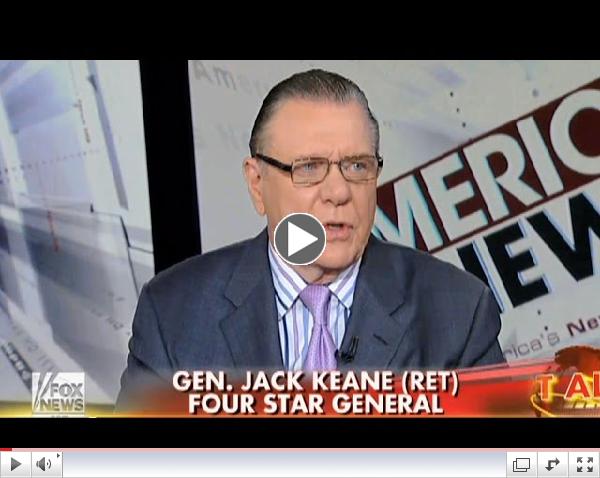 | |
Conflicts of Interest Exposed for TV Guests Backing Military Action
|
|
Why Doesn't America Care About 2 Black Teenage Girls Who Were Killed?

Curious and shocking as it may be, this incident, where race, class and gender intersect, hasn't made much more than a blip on the mainstream media's radar. By Ian Blair
Salon via Alternet
Sept 25, 2014 - In the wee hours of a balmy, eerily calm morning in North Jacksonville, Florida last Thursday, the lifeless bodies of two teenage girls, Angelia Mangum and Tjhisha Ball, were discovered alongside a somewhat remote stretch of road just East of Interstate 95 and West of U.S. 17, allegedly naked, bound with zip ties, lumped on top of each other, surrounded in a pool of blood.
Two witnesses driving past on Sisson Drive, near the intersection of Main Street North and Clark Road, said they initially thought they saw a corpse; so they flipped a U-turn to see if they could determine whether it was a human body or simply a dead animal, roadkill. On second glance, it appeared to be the former.
Upon confirming their initial suspicions, one witness, Jason Brown, as he recounted to Jacksonville's WFOX-TV Ch. 30, said it "looked like they were tossed from the overpass." The two passers-by then hurriedly dialed 9-1-1 to notify law enforcement. Authorities dispatched to the scene arrived and immediately suspected "foul play," according to local ABC affiliate, WJXT, and the Tampa Bay Times, although what exactly happened to Mangum, 19, and Ball, 18, remains unclear. Autopsies have been ordered. No suspects have been named. No arrests have been announced.
The details of, and circumstances surrounding, Mangum and Ball's untimely and gruesome deaths have been primarily confined to local media in the Duval County area. Which is to say their story, curious and shocking as it may be, hasn't made much more than a blip on the mainstream media's radar. Why this is the case is difficult to determine. However, a few familiar hypotheses seem to be making their way to the forefront .
Considering the ongoing coverage of the missing University of Virginia student, Hannah Graham, who allegedly was abducted by Jesse Matthew, a portly 6 foot, 2 inch, 270-pound black man with dreadlocks - Matthew is wanted on suspicion of abduction with the intent to defile, according to Charlottesville Police Chief Timothy Longo - one might suppose that the lack of collective interest by the press is related, but not limited to, the intersection of the race and class of the victims.
To this accord, Ebony senior editor, Jamilah Lemieux, penned an extremely blunt op-ed entitled "Black Girls Murdered (But Do YOU Care?)" posing these very questions - questions that are sadly not new - pleading for national media outlets, which include, among its ranks, this publication, to give the case of these two young, black, teenage girls the kind of attention and diligent reporting they deserve. And rightly so, their story matters. That Mangum and Ball were, if investigators' suspicions are confirmed, brutally murdered and disposed of like roadside litter, serves as a tragic allegory to their treatment thus far by the national press and the American public.
As with many stories where race and class takes center stage, and where black victims lie slain, the character of the victims - as well as their complete history of personal choices, family "flaws," and the victim's economic and social circumstances - has (lightly) colored the narrative. From the Tampa Bay Times:
State records show that both women had criminal records.
Ball was arrested last year in Jacksonville on a felony cocaine charge, records show, but the charge was dropped. In April, she was arrested in Tampa by the Florida Highway Patrol on a misdemeanor charge of driving without a valid license.
The records also show that Mangum was arrested twice as a juvenile on burglary and larceny charges in Hillsborough County. More recently, she last year faced a charge of failing to appear in Hillsborough court on a burglary charge.
It has also been reported that either one or both of the victims had been working in Jacksonville as exotic dancers at a nearby gentlemen's club....(Click title for more)
|
 Part of the CCDS team at the conference: Kathy Sykes, Janet Tucker, Harry Targ, Paul Krehbiel Part of the CCDS team at the conference: Kathy Sykes, Janet Tucker, Harry Targ, Paul Krehbiel
By Paul Krehbiel
Committees of Correspondence for Democracy and Socialism
"The capitalist class is in a serious crisis without solution," said David Schweikart at the Moving Beyond Capitalism conference held in San Miguel de Allende, Mexico from July 30-August 5, 2014. "But there is a solution," he said, "economic democracy, democratic socialism." Over 200 people from 15 countries discussed how to make this happen, organized by the Center for Global Justice.
Chronic high unemployment, depression of wages and benefits, cuts in social services, and growing inequality and repression, and social and political resistance are endemic to nearly all capitalist countries, said Schweikart, a Philosophy professor at Loyola University in Chicago, and author of After Capitalism.
Schweikart's model of democratic socialism calls for a regulated competitive market economy, socialized means of production and democratic workplaces (he advocates worker-run cooperatives as an example), non-profit public banks to finance projects, full employment, and a guarantee that human needs will be meet for everyone.
Cliff DuRand, a conference organizer, said people are creating alternatives to capitalism today all over the world. "If we've built these alternative institutions, the next time the capitalist system collapses...we will be able to survive without it."
Gustavo Esteva, a former Mexican government official, founder of the University of the Land in Oxaca, and an advisor to the Zapatistas in Chiapas in southern Mexico, gave a good account of how the indigenous people of this region are creating a new democratic and socialist-oriented society that they control, within the borders of a capitalist Mexico. The Zapatistas launched an armed uprising in the mid-1990?s to stop NAFTA and the Mexican government from allowing multi-national corporations to come into Chiapas to extract minerals to enrich the corporations and destroy their lives and their local economy.
Ana Maldonado of the Venezuelan Ministry of Communal Economy could not attend, so University of Utah Professor Al Campbell filled in for her. Campbell has worked in Venezuelan with the Community Councils, a new form of grassroots democracy and socialism. Created in 2006 by the late socialist president Hugo Chavez, there are 20,000 Community Councils today, each holding meetings in neighborhoods where all residents can attend, discuss, and vote on decisions for their community. ...(Click title for more)
|
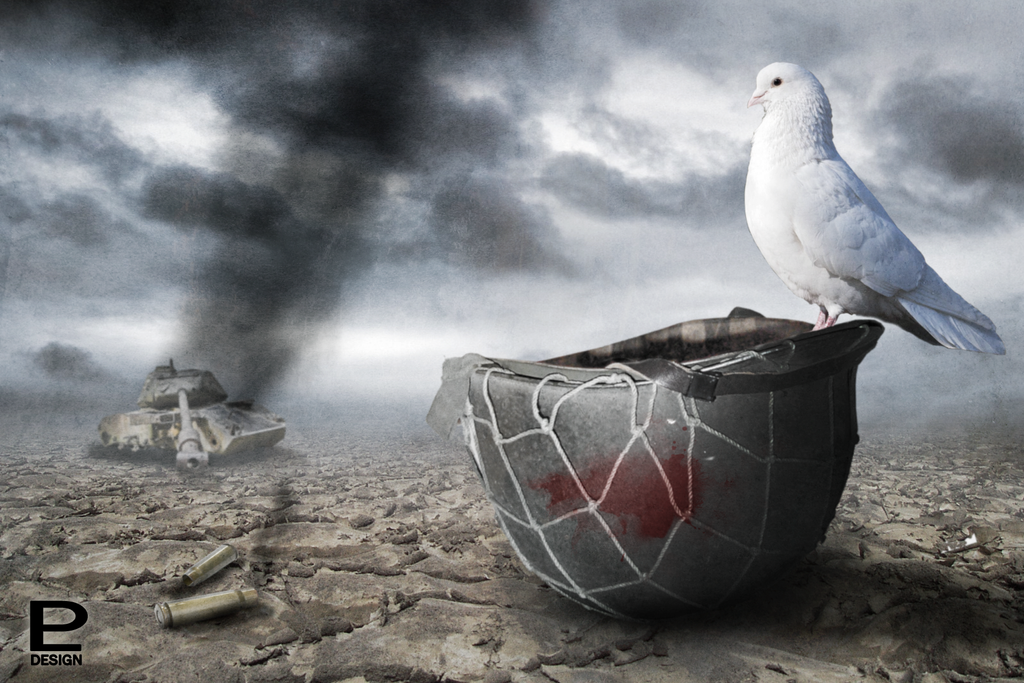
By Harry Targ
Beaver County Peace Links via Diary of a Heartland Radical
From Wartime Alliance to Deadly Global Conflict
I do not believe history repeats itself but I find myself looking back to the past for lessons which might be relevant today. For example, during World War II an "unnatural alliance" between the United States (the new imperial hegemon), Great Britain (the old one), and the former Soviet Union (the revolutionary challenger to capitalist hegemony) formed to defeat fascism in Europe. It was in the interests of all three nations to do so.
As the war was ending the leaders of the "big three" nations--President Roosevelt, Prime Minister Winston Churchill, and the Soviet leader, Joseph Stalin--met at Yalta in the Crimea to plan for a post-war world order. They made agreements on Eastern European borders, facilitating elections in Poland, administering a defeated Germany, defeating Japan in the Asian war, and planning for the first meeting of the United Nations. The three leaders returned to their respective countries declaring that a peaceful post-war world order would be established. "The spirit of Yalta" brought hope to millions of North Americans and Europeans, West and East.
In April, President Roosevelt died and a new more bellicose administration had come to power in Washington. Within three months the United States had successfully tested its new atomic bomb and dropped two of them on Hiroshima and Nagasaki. By the fall, 1945 US and Soviet disputes over treaties ending the status of war with former fascist regimes in Eastern Europe began to destroy the comity that had been built over the course of the war and codified at Yalta. In 1946 crises occurred between East and West over Iran and Greece. It is clear in retrospect that ever since its ascendency to power the new Truman administration had been working to achieve global hegemony in the post-war period, using its military and economic superiority as tools.
In the spring of 1947, the US decided to replace the British in Greece as the latter worked to crush a leftwing insurgency in that country's civil war. President Truman was warned by the Republican Chair of the Senate Foreign Relations Committee that he, Truman, better "scare hell out of the American people." This was so because most Americans favored peace over more conflict in world affairs and many still perceived the former wartime ally, the Soviet Union, positively.
The announcement of the new global threat and the need to mobilize resources over the next several years to "defend" against the demonic Soviet Union led to the recommendations for action in the famous Truman Doctrine speech to Congress in March, 1947. These put the US on a war path that would cost more than 10 million lives, international and American, and at least $5 trillion by the twenty-first century. ...(Click title for more) ...(Click title for more)
|
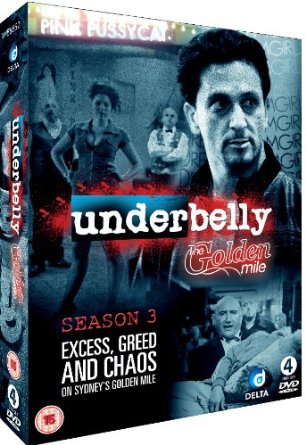 This powerful show chronicles actual bloody underworld wars and police malfeasance in Sydney and Melbourne from 1976 to 2004. This powerful show chronicles actual bloody underworld wars and police malfeasance in Sydney and Melbourne from 1976 to 2004.
By Alan Waldman
The Rag Blog
[In his weekly column, Alan Waldman reviews some of his favorite films and TV series that readers may have missed, including TV dramas, mysteries, and comedies from Canada, England, Ireland, Australia, New Zealand and Scotland. Most are available on DVD and/or Netflix, and some episodes are on YouTube.]
Sept. 15, 2014 - Underbelly is the overall title of three exceptionally fine Australian 13-part TV drama series that tell the true stories (virtually blow-by-blow histories) of actual drug gang wars and police efforts to solve crimes, hampered in many cases by major corruption.
All three series (39 total episodes-nearly 1,800 minutes of dramatized nonfiction) are on Netflix and Netflix Instant. Pilot episodes can be seen here, here , and here.
The trio of shows won 34 major Australian Awards and 34 other nominations. These included two Best Drama Series honors, four Best Screenplay Awards, three Best Director statuettes, and 12 Best Actor/Actress awards.
Waldman's film and TV treasures you may have missed
DVD Verdict's David Johnson effused:
Wow! Who knew Australia was such a dangerous place to live? Sure, I knew about the poisonous snakes and the insects that want to eat you, but I wasn't aware of the drug wars that raged throughout the region for latter third of the twentieth century. That's right - Aussie gangsters will mess your @#$% up! This is TV drama you'd only find on stateside pay cable, with all manner of bloodshed, profanity, and liberal nudity.
In the three series, most characters have the names of the real people they represent, although cop names had to be changed and a few living criminals have noms de TV.
Season One: Underbelly: A Tale of Two Cities starts off in swinging '70s when drugs began saturating Australia and their Melbourne distribution was controlled by mob boss Bob Trimbole (Best Actor winner Roy Billing) and New Zealand entrepreneur Terry Clark (Matthew Newton). Clark starts out as a mid-level marijuana slinger, but the buckets of cash generated by selling the hard stuff motivate them to corner the market. Competition arises, the Federal Police work every angle they can think of to bring them down, and ultimately the pair have to flee to England and Ireland....(Click title for more)
|
|
Keep up with the Moral Mondays with a Red Resolution...
Become a CCDS member today!
 The time is long past for 'Lone Rangers'. Being a socialist by your self is no fun and doesn't help much. Join CCDS today--$36 regular, $48 household and $18 youth. The time is long past for 'Lone Rangers'. Being a socialist by your self is no fun and doesn't help much. Join CCDS today--$36 regular, $48 household and $18 youth.
Better yet, beome a sustainer at $20 per month, and we'll send you a copy of Jack O'Dell's new book, 'Climbing Jacobs Ladder,' drawing on the lessons of the movement in the South in the 1950s and 1960s.
Solidarity, Carl Davidson, CCDS
|
|
|